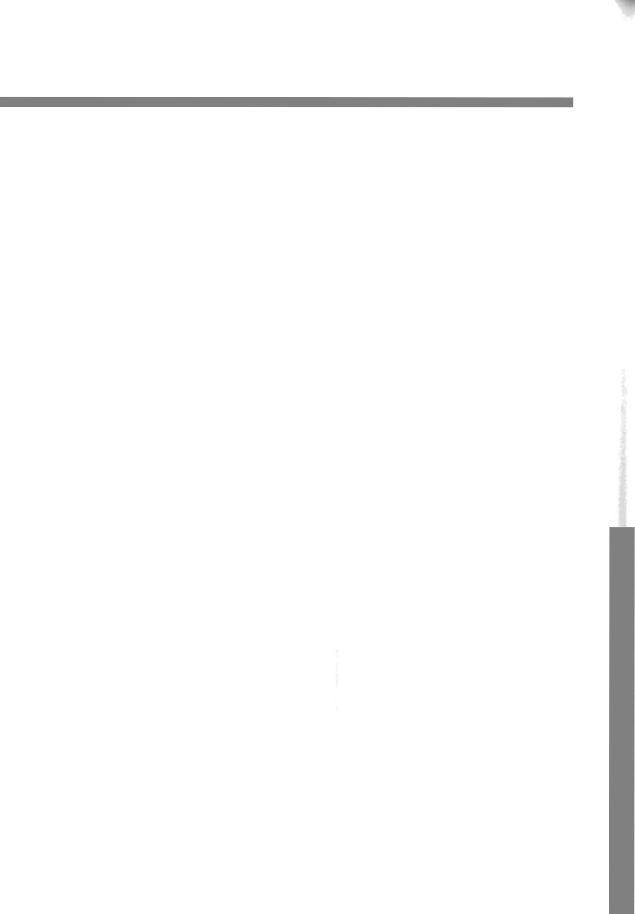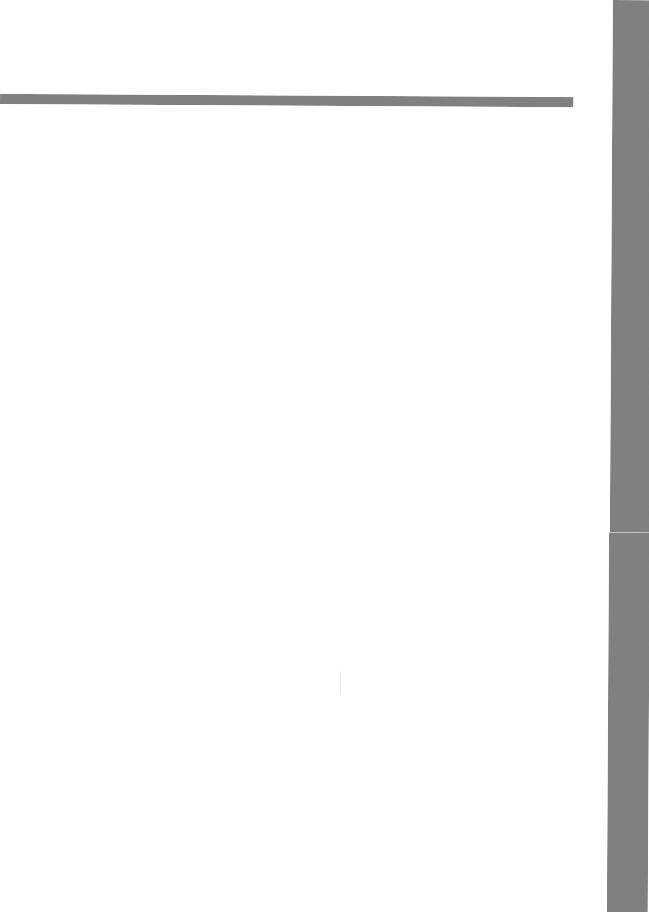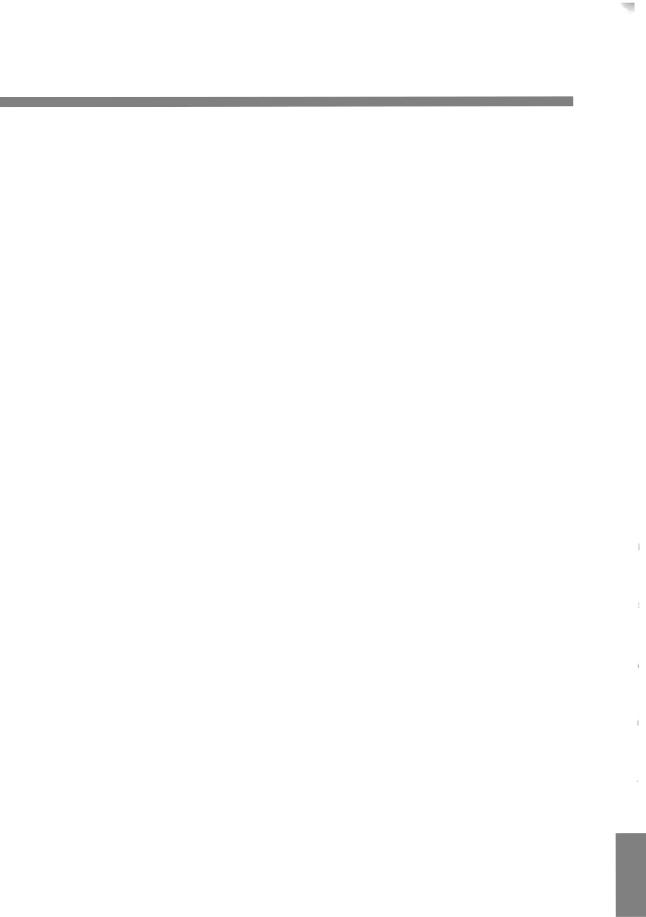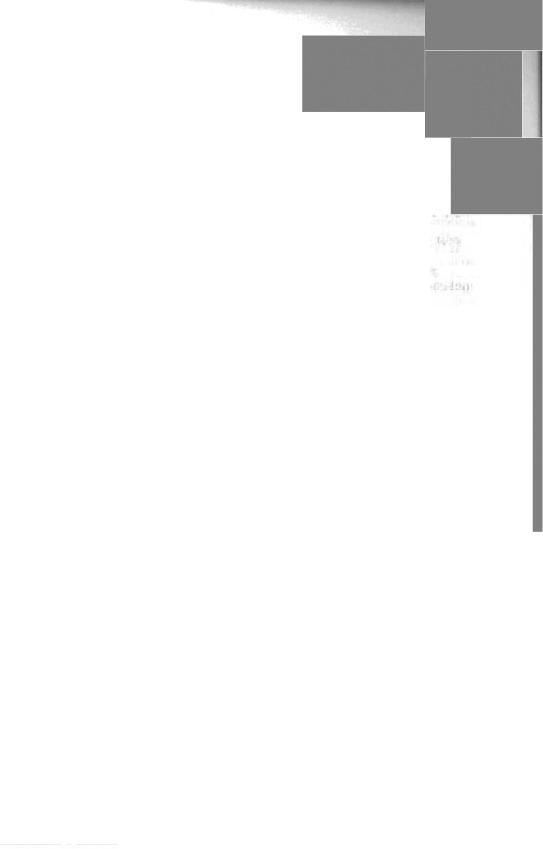
Stella_Cottrell_Critical_Thinking_Skills_Deve
.pdf

Answers to Practice 4: Finding flaws in the argument
The Great Chain of Being (Text 4) |
Comments |
'Notions of a "Creat Chain of Being" and of a natural order to the universe continued to exert ideological significance during the eighteenth century and beyond. 'Discuss.
The concept of the 'Great Chain of Being' dominated thinking and writing for many centuries before the eighteenth century. Indeed, Shakespeare and other great writers of the seventeenth century drew on the idea for inspiration. By the eighteenth century, things had started to change radically. This was a period of expansion intellectually and geographically for European states, including Britain, Old ideas were dying out as soldiers travelled the world during the wars against the American colonies and the expanding empire (Colley, 2003), and merchants traded more extensively with the east. Barking (1957) and Madison (1967) argue that enlightenment ideas and scientific observation replaced more traditional ideas. A revolution in taste took place as the homes of the rich filled with chinoiserie, art from China. Young people came of age through making a 'Grand Tour' of Europe.= The concept of the chain of being was being supplanted by other ideas more familiar to our modern world.*
In this period of exploration and change, the ongoing wars between England and revolutionary France led t o an unusually large production of political propaganda.
end let on's^^ analysis of this showed that many6 pamphlets used the concept of the 'chain of being' to encourage the population to support the war.* There were many ways that publicists referred to the idea of a natural order t o encourage people to refuse the revolutionary ideologies espoused by the French and to encourage them to defend England in the event of an invasion. Those producing pamphlets and other pro-war literature referred to the notion of a natural order to decry French theories of liberty and equality and to argue that English people should take o n a patriotic defence of the realm.21
jThe propaganda was very insulting about the French and their new ideas and could easily have caused a diplomatic incident and an earlier outbreak of war. Fortunately, England and France are hundreds of miles apart, and such distances were more significant in the
240 Critical Thinking Skills
5 Unnecessary background information, especially as this is not used to look specifically at the idea of the chain of being. On the other hand, important background information, such as explaining what is meant by the 'chain of being', is not provided.
4 Inconsistency. This paragraph suggests the concept of the chain of being was waning. The next paragraph suggests it was still widely used. The author doesn't show how these two apparently contradictory ideas could both be true. For example, the idea could have been used in the propaganda for political purposes even if many people no longer believed in it. Apparent contradictions such as this need to be explained and resolved.
22 Poor reference. No date is provided here and Pendleton is not fully detailed in the references, so it would be hard for the reader to check this source of information for themselves.
6 Lack of precision. 'Many' is a vague term. The reader needs to know how many? What proportion?
21 Tautology. This paragraph repeats the same basic idea three times but in different words: i.e. that publicists used the idea of natural order to encourage a pro-war patriotic stance rather than support France and its ideas of liberty and equality. The final sentence, for example, does not take the argument forward or provide any new information for the reader.
5This paragraph provides unnecessary background about the impact of the propaganda on the conduct of the war by the French, which is not what the question asks.
0Stella Cottrell (2005), Critical Thitlki~lgSkills,
Palgrave Macmillan Ltd

Answers to Practice 4: Finding flaws in the argument
eighteenth century. This means that the French leader, Buonaparte, wouldn't have seen the propaganda and so didn't launch a full-scale invasion.l~7 1 l6
The idea of a natural order was used to bolster the authority of those with social and economic power. Mary Wollstonecraft (1792) argued that the concept of a natural order was used to justify all kinds of injustice. She argued that people who were cruel to animals and children, were also likely to agree with the slave trade, and the oppression of women, which she opposed. However, she clearly thought it was acceptable to lump humans who lacked money and power into the same bracket as animals. As animals were lower down the chain of being at that time, her comparison of animals with humans who lacked power shows she thought of poor people and slaves as being lower types of being.lg Her prejudices are typical of ruling class women from that p e r i ~ d . ~
Clearly, rich people in the eighteenth century found the idea of a natural order beneficial.13 This is particularly outrageous when one considers how vulnerable the poor were at the time, how sad their lives and how dependent on a kind word from their social betters.17 People were taught to regard those richer than themselves as their 'betters' and t o refer to them as their masters. People were meant to accept that they must regard others as superior by virtue of their birth, and t o defer to them in all things.
0 Stella Cottrell (ZOOS),Criticnl Tlriirkirrg Skills,
Palgrave Macmillan Ltd
1False premises. The argument proposed for the lack of an invasion is based on false premises: it is factually inaccurate that England and France are hundreds of miles apart so this would not be a reason for the propaganda not being seen in France. The first paragraph of this piece suggests there was a lot of travel and exchange of ideas, which, if true, would make it more likely that the propaganda would have been seen in France.
7Unsupported assumption about why Buonaparte didn't launch a full-scale invasion.
16Unwarranted leaps: the author jumps from an unsubstantiated point (that the propaganda could have resulted in invasion - we don't know this) to another (that Buonaparte couldn't have seen it), to an unsubstantiated conclusion about why a full-scale invasion didn't happen.
19Misrepresentation: Mary Wollstonecraft draws a comparison between different kinds of oppression, because she saw a common pattern of cruelty, which she opposed. The author misrepresents her intentions by claiming she regarded the poor and slaves as more animal like, simply because the idea of the chain of being was used by others at that time.
3Stereotyping: although many women of her class may have held such prejudiced opinions, the author stereotypes Mary Wollstonecraft by assuming she held the same ideas, without giving any evidence of this.
13Deflection: the word 'clearly' suggests that the author has established how the rich people used the idea of natural order. This can deflect the reader from noticing that sufficient evidence has not yet been provided to prove the arqument- .
17 Emotive language: use of words such as 'outrageous' and phrases such as 'sad lives' and 'dependent on a kind word'
Practice activities on longer texts 241



Answers to Practice 4: Finding flaws in the argument
References [compare with p. ~ 3 3 1 ~ ~
Primary sources
Anon (1802) Szich is Buonaparte, ~ 0 n d o n . c ~ ) Kaspar ~ a v a t e r (Essays~ ) on Physiognomy,
Translated by Rev. C. Moore and illustrated after Lavater by Barlow, London, 1797.
Pratt, Pratt's Address to His Countrymen or tize T ~ u e Bom Englishman's Castle. London.
Bishop of Llandaff (d and e,
Mary Wollstonecraft (1792) Vindicatiorz of tlze Rights of Women. Middlesex.@and 0
White, C. An Accolint of the Infinite Gradations in Man (Read t o the Literary and Philosophical
Society of Manchester at Different Meetings) 177gv(a,c and e)
Secondary sources
adi is on.(^, and f, (1967) 'The end of the Chain of Being: the impact of Descartian. Jolirnal of Medieval and Enlightenment Shdies, 66; 7."
Barking, J. K. (1957) Changes in Conceptions of the Universe. Cotteridge: Poltergeist Press*
Linda Colley (2003) Captives.@, and e,
Holmes, Geoffrey. (1977) 'Gregory King and the social structure of pre-industrial England'
Transactions of the Royal History Society, 27
(a and c)
Pendleton (d and
E.P. Thompson The Making of tize English
Working Class (1963) Middlesex: Penguin (a and c)
provide evidence that those who did use the concept of natural order in one aspect of their life, then acted in a contrary way in other aspects: that is, that the notion was not core to their belief system to such an extent that it ruled their behav~our
11The conclusion does not meet sufficient conditions as the evidence provided does not adequately support it.
22Compare the details of these references with those for Practice 3 . Note:
(a)The order of items within each reference is not consistent from one reference to another, such as the order of the date, and whether initials or names are used.
(b)Not all the references used in the
|
text are detailed in this list of |
I |
references. |
I(c) Some items in the reference list do not appear in the text so should not appear here. It is possible that the author has used this source but not referenced it properly in the text.
(d)The information about the author is incomplete for some references so the reader cannot look these up.
(e)Some titles are not written in full
(see list of references from Practice
3 ) .
(f) Items are not in alphabetical order.
* These two sources are hypothetical and provided for the purpose of the practice activity; the other sources are genuine.
44 Critical Thinking Skills
O Stella Cottrell (2005), Criticnl ThinkingSkills,
Palgrave Macmillan Ltd


Bibliography
Arnheim, R. (1954, 1974) Art arzd Viszial Perception: The Psychology of the Creative Eye
(Berkeley: University of California Press). Barrell, J. (1980) The Dark Side of the Landscape:
The Rza-a1Poor irz English Painting, 1730-1840 (Cambridge: Cambridge University Press).
Bodner, G. M. (1988) 'Consumer Chemistry: Critical Thinking at the Concrete Level'.
Journal of Chemistry Edzrcation, 65 (3), 212-13.
Bowlby, J. (1980) Attachnzent and Loss, Vol. 3:
Loss, Sadness and Depression (New York: Basic Books).
Boyle, F. (1997) The Guardian Careers Guide: Law
(London: Fourth Estate).
Campbell, A. (1984) The Girls in the Gang (Oxford: Basil Blackwell).
Carwell, H. (1977) Blacks in Science: Astrophysicist to Zoologist (Hicksville, NY: Exposition Press).
Collins, P. (1998) 'Negotiating Selves: Reflections o n "Unstructured" Interviewing'. Sociological Research Online, 3 (3). www.socresonline.org
.uk/3/3/2.html January 2001. Cowell, B., Keeley, S., Shemberg, M. and
Zinnbauer, M. (1995) 'Coping with Student Resistance t o Critical Thinking: What the Psychotherapy Literature Can Tell Us'. College Teaching, 43 (4).
Crane, T. (2001) Elements of Mind: An Introductiorz to the Philosophy of Mind (Oxford: Oxford University Press).
Csikszentmihalyi, M. (1992) Flow: The Psyclzology of Happiness (London: Random House).
Donaldson, M. (1978) Children's Minds (London: Fontana).
Dunbar, R. (1996) Grooming, Gossip and the Evoltition of Language (London: Faber & Faber).
Eco, U. (1998) Serendipities: Larzgzlage and Ltlnacy
(London: Weidenfeld & Nicolson).
Elliott, J. H. (1972) The Old World and the New,
1492-1 650 (Cambridge: Cambridge University Press).
Ennis, R. H. (1987) 'A Taxonomy of Critical Thinking Dispositions and Abilities'. In J. Baron and R. Sternberg (eds), Teaching
ThirzkirzgSkills: Theory and Practice (New York: W. H. Freeman).
Farndon, J. (1994) Dictionary of the Earth
(London: Dorling Kindersley).
Farrar, S. (2004a) 'It's Very Evolved of Us to Ape a Yawn'. Times Higher Edtrcational Szipplement,
12 March 2004, p. 13.
Farrar, S. (2004b) 'It's Brit Art, but Not as we Know itf. Times Higher Edzrcatiorzal Supplenzer?f,
9 July 2004, p. 8.
Farrar, S. ( 2 0 0 4 ~'Old) Sea Chart is So Current'.
Tir?zesHigher Edlicational Szipplement, 16 July 2004, p. 5.
Fillion, L. and Arazi, S. (2002) 'Does Organic Food Taste Better? A Claim Substantiation Approach'. Nutrition & Food Science, 32 (4))
153-7.
Fisher, A. (1988) The Logic ofReal Arguments
(Cambridge: Cambridge University Press). Fisher, D. and Hanstock, T. (1998) Citing
References (Oxford: Blackwell).
Foster, R. (2004) Rhythms ofLife (London: Profile Books).
Garnham, A. and Oakhill, J. (1994) Thinking and Reasoning (Oxford: Blackwell).
Gilligan, C. (1977) 'In a Different Voice: Women's Conceptions of Self and Morality'.
Harvald Edl~cationalReview, 47, 418-517. Green, E. P. and Short, F. T. (2004) World Atlas
of Sea Grasses (Berkeley: University of California Press).
Greenfield, S. (1997) The Human Brain: A Guided Tour (London: Phoenix).
Hammacher, A. M. (1986) Magritte (London: Thames & Hudson).
Hogan, C. (2004) 'Giving Lawyers the Slip'. The Times, 24 August 2004, p. 26.
Jacobs, P. A., Brunton, M., Melville, M. M., Brittain, R. P. and McClermont, W. F. (1965)
6 Critical Thinking Skills


abstracts, using, 128
academic writing, 54, 125, 127, 149, 162, 172, 181
see also essays
accuracy, 5, 6, 9, 54, 152, 166, 172 see also precision
agreement, 52 ambiguity, 8,40
analogies, 112-13, 122, 221, 243
analysis, critical, 1, 4, 8, 51, 54, 58, 60, 117, 155, 168
use analysis rather than description, 58, 197 when writing, 167-82
see also argument, identifying; comparison; categorising; selection; evidence, evaluating; selection
argument, xii, 38, 52 arguments as reasons, 38 contributing arguments, 38
counter arguments, 59-60, 65, 117, 169, 175-6, 187, 193, 194, 195, 212, 213, 229, 231
features, 37, 38, 40, 41, 47, 63, 208 flawed arguments, 105, 106-21, 188 identifying arguments, 37, 41-3, 47, 51-61 implicit arguments, 85, 93, 103
and non-argument 51, 54-61, 62, overall argument, xii, 38,
and theoretical perspective, 149, 150; see also structuring an argument
'winning' an argument, 10 assertions, xii
assumptions, 85-90, 99, 220, 221 ideological, 93, 103
implicit assumptions, 88-9
used as reasons, 89-90, 100-1
attention, focusing, 1, 17, 23-6, 29, 34, 51 to detail, 5, 12, 13-15, 17
audience, ix, 168 authenticity, 130, 146 author, x
author's position, 38-9, 40, 49, 52, 63, 64, 65, 78, 79-80, 112, 187, 193, 194, 195, 196, 212
background information, necessary and unnecessary, 189, 212, 229, 230, 240
see also description
barriers to critical thinking, 1, 10-12, 16 benefits of critical thinking skills, 4
castle of cards, 116, 242 categorising, 17, 19, 27-8, 151
grouping points, 169
reasons and arguments, 194, 165 theories, 141, 150, 151, 165
cause and effect, 106-8, 121, 122, 242 clarity in critical thinking, 64, 65, 168 close reading, 20, 29-3 1, 147 comparisons, making, 18, 21, 24, 27, 112
complicity, with the reader, 114, 221, 222, 243 conclusions, xii, 41, 46, 47
as deduction, 46, 74, 195
evidence-based, 1334, 187, 189, 193, 196, 229-32
interim see intermediate
intermediate, xii, 63, 71-2, 193, 194, 212, 213, 214, 230, 231, 232
location of, 43, 45-7
logical conclusions, 74, 214, 232; see also deduction
as reasons see conclusions, intermediate
as summaries, 46, 47, 60, 74, 82, 213, 214, 232
supported by reasons, 212 tentative conclusions 179
writing conclusions, 176-7, 180, 182, 187, 196
connoted meanings, 95-6, 98 consistency
checking your own writing for, 197 internal, xii, 65-6, 79-80, 187, 189, 241,
243 logical, xii, 67-8
contributing arguments see argument correlation, 107-8
counter arguments, see argument credible sources, 188
critical thinking
in academic contexts, 7-9, 11, 12 as cognitive activity, 1
18 Critical Thinking Skills
